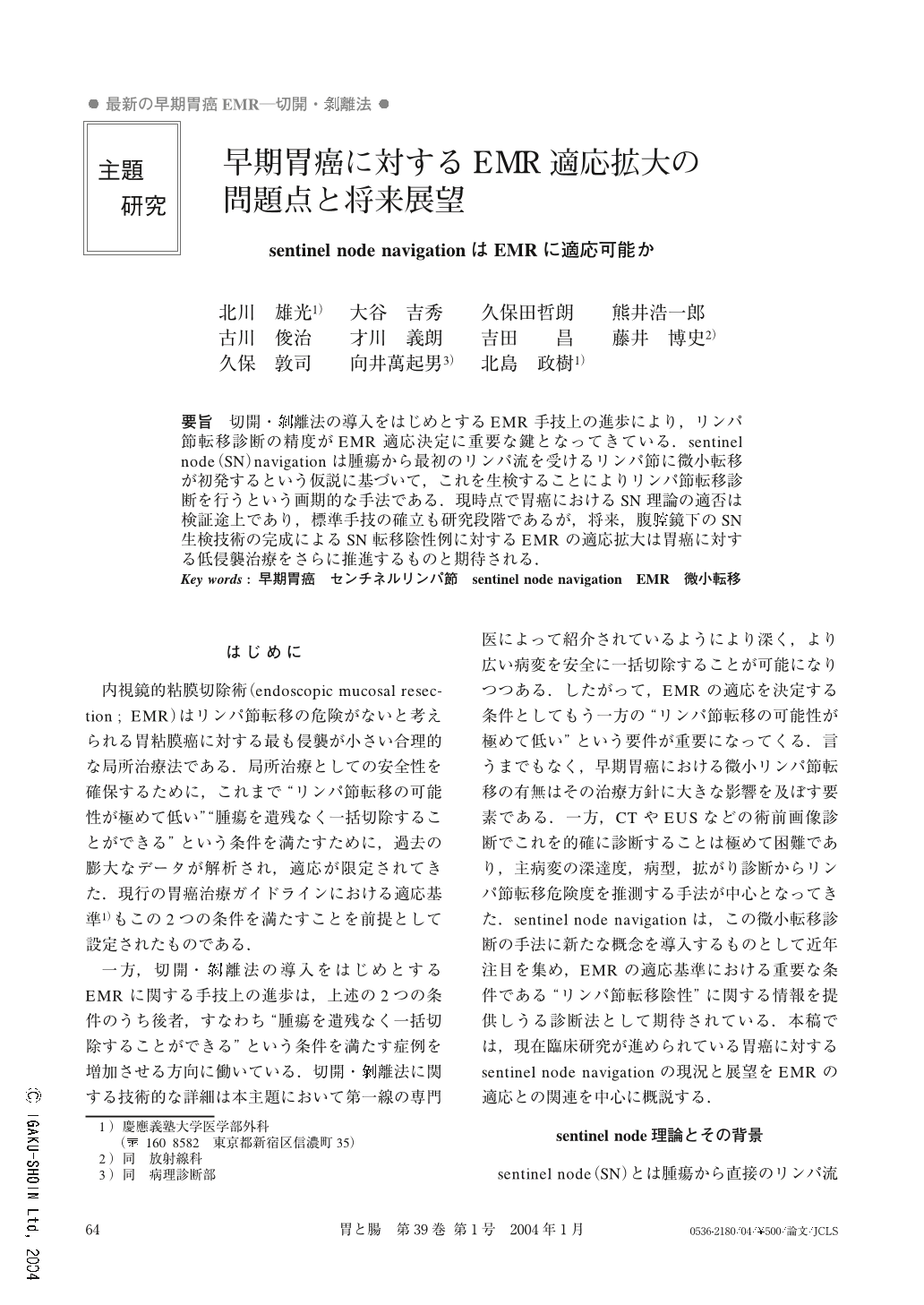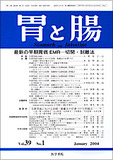Japanese
English
- 有料閲覧
- Abstract 文献概要
- 1ページ目 Look Inside
- 参考文献 Reference
- サイト内被引用 Cited by
要旨 切開・剥離法の導入をはじめとするEMR手技上の進歩により,リンパ節転移診断の精度がEMR適応決定に重要な鍵となってきている.sentinel node (SN) navigationは腫瘍から最初のリンパ流を受けるリンパ節に微小転移が初発するという仮説に基づいて,これを生検することによりリンパ節転移診断を行うという画期的な手法である.現時点で胃癌におけるSN理論の適否は検証途上であり,標準手技の確立も研究段階であるが,将来,腹腔鏡下のSN生検技術の完成によるSN転移陰性例に対するEMRの適応拡大は胃癌に対する低侵襲治療をさらに推進するものと期待される.
The first possible sites of metastasis via lymphatic drainage from a primary lesion are known as sentinel nodes (SNs). An orderly progression of lymph node metastasis has been well demonstrated in both malignant melanoma and breast cancer over the last decade. Gastric cancer is now the most suitable target of sentinel node navigation surgery after breast cancer. Acceptable detection rates of SNs as well as sensitivity in detecting micrometastasis based on SN status was reported using the dye-guided method, and also the radio-guided method. In particular, clinically T1N0 gastric cancer seems to be a good entity for which efforts to modify the therapeutic approach could be undertaken. From the data reported in the literature, micro-metastases tend to be limited within the sentinel basins in cT1N0 gastric cancer. Sentinel basins are therefore good targets for selective lymphadenectomy of cT1N0 gastric cancer with potential risk of micrometastasis. Furthermore, laparoscopic local resection or endoscopic mucosal resection (EMR) would be theoretically feasible for curative treatment of SN negative early gastric cancer. Although the techniques and feasibility of laparoscopic SN sampling are still under investigation, we hope that these issues will be resolved, and that SN mapping combined with EMR for gastric cancer will be recognized as having great clinical significance.
1) Department of Surgery, Keio University School of Medicine, Tokyo

Copyright © 2004, Igaku-Shoin Ltd. All rights reserved.


